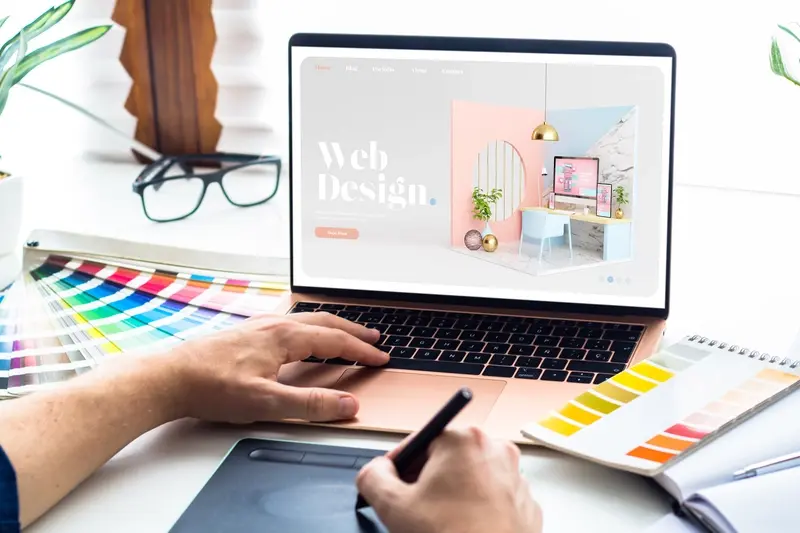What Are the Key Steps to Building Adaptive App Interfaces?
Apps with personalised experiences see conversion rates that are nearly 20% higher than their one-size-fits-all counterparts. That's not just a nice-to-have anymore—it's becoming table stakes in a market where users delete apps faster than you can say "user engagement". After spending the better part of a decade building mobile apps for everyone from scrappy startups to massive corporations, I've watched the industry shift from simple, static interfaces to these incredibly sophisticated systems that actually learn and adapt to individual users.
The thing is, adaptive app interfaces aren't just about making things look pretty or following the latest design trends. They're about creating experiences that genuinely understand how different people use your app and then morphing to meet those specific needs. I mean, think about it—your mum probably uses your app completely differently than a tech-savvy teenager would, right? So why would you show them exactly the same interface?
The best interfaces are the ones users don't even notice because everything just feels like it was built specifically for them
Building these adaptive systems involves way more than just shuffling some buttons around based on user preferences. You're talking about creating flexible layout systems, implementing smart data collection that actually respects privacy, and building frameworks that can handle dynamic content without breaking a sweat. And here's the kicker—you need to do all of this while keeping performance snappy and maintaining a consistent brand experience. It's a proper balancing act, but when you get it right? The difference in user engagement is honestly night and day. That's what we're going to dive into here.
Understanding User Behaviour and Context
Here's something I learned the hard way—users lie. Not intentionally, mind you, but they do. They'll tell you in surveys that they want one thing, then their actual behaviour shows something completely different. That's why building adaptive interfaces isn't just about asking people what they want; it's about watching what they actually do.
When I'm working with clients on adaptive app interfaces, the first thing we do is map out the different contexts where their app gets used. A banking app behaves differently when someone's checking their balance at home versus rushing to make a payment at a checkout. The interface needs to recognise these situations and adapt accordingly.
The Three Pillars of User Context
Every adaptive interface should consider these three factors:
- Environmental context—where and when they're using the app
- Task context—what they're trying to accomplish right now
- Personal context—their preferences, history, and current emotional state
I've seen apps that try to be clever with personalisation but miss the basics. Your interface might know someone's favourite coffee order, but if it takes five taps to place that order during their morning commute, you've failed at the environmental context bit.
Collecting Meaningful Behavioural Data
The real magic happens when you start tracking micro-interactions. How long do users spend on each screen? Where do they hesitate? What actions do they repeat most often? This data tells you more about user intent than any focus group ever will.
But here's the thing—you need to balance data collection with privacy. Users are getting smarter about permissions, and rightfully so. The key is being transparent about what you're collecting and why it makes their experience better.
Designing Flexible Layout Systems
Creating adaptive app interfaces starts with building layouts that can bend without breaking. I've learned this the hard way—rigid layouts are the enemy of personalisation. When you're designing for different user types, screen sizes and preferences, your interface needs to be like elastic; it should stretch to fit whatever situation its thrown into.
The secret is thinking in components, not pages. Each element of your interface should be modular and reusable. Your navigation bar, content cards, and form fields all need to work independently while playing nicely together. This means establishing clear spacing rules, flexible grid systems, and typography that scales properly across different contexts.
Building Blocks That Adapt
I always start with the smallest components first—buttons, input fields, icons. These building blocks need consistent behaviour whether they're being used by a new user seeing simplified options or a power user with advanced features enabled. The key is setting up your design system with variables for spacing, colours, and sizes that can be adjusted programmatically based on user data.
One mistake I see constantly? Designers who create beautiful mockups for one user type and then try to force everyone else into that same mould. Your layout system should accommodate different information densities. Some users want minimal interfaces with just the basics; others need data-rich views with multiple options visible at once.
Use container queries instead of media queries when possible—they respond to the actual space available rather than just screen size, making your layouts truly adaptive to different content lengths and user interface customisation.
Testing your flexible layouts early saves headaches later. Build prototypes that show how your interface behaves when content changes length, when features are hidden or revealed, and when different user preferences are applied. Your future self will thank you for this groundwork.
Creating Dynamic Content Frameworks
Right, so you've got your flexible layouts sorted—now comes the really interesting bit. Building a content framework that actually adapts to what users need, when they need it. I mean, this is where apps start feeling properly intelligent rather than just responsive.
The trick here is thinking about content as modular blocks rather than fixed pages. When I'm working with clients, I always explain it like this: your app needs to be like a smart assistant that knows which information to show first. A fitness app might surface workout reminders for morning users but meal tracking for evening users—same content pool, different priorities based on context.
Content Prioritisation Systems
You'll want to create a hierarchy system that ranks content importance. User location, time of day, past behaviour, device type—all these factors should influence what appears at the top of feeds or home screens. I've seen apps fail because they treat all content equally; users get overwhelmed and bounce.
The backend architecture needs to support this flexibility too. You can't just hardcode content positions and expect magic to happen. Build APIs that can return different content structures based on user parameters—it's more work upfront but pays dividends when users start engaging more because they're seeing relevant stuff. This dynamic approach to content optimisation helps both user experience and app discoverability.
Real-Time Content Adaptation
Here's where things get really clever: content that changes based on live data. Weather apps do this well—they'll show umbrella reminders when rain's forecast, or sun protection tips during heatwaves. Your framework should be able to pull in external data sources and adjust content accordingly. It's not just about personalisation anymore; it's about being genuinely helpful in the moment.
Implementing Smart Data Collection
Right, let's talk about the backbone of any good adaptive interface—data collection. Without proper data, your app is basically guessing what users want, and trust me, apps are terrible at guessing! The key is collecting the right information without making users feel like they're being interrogated by a digital detective.
I've learned that smart data collection happens in layers. First, theres the obvious stuff—what buttons people tap, how long they spend on different screens, when they abandon certain actions. This behavioural data tells you what users actually do, not what they say they do. But here's where it gets interesting: you need to capture the context too. Is someone using your app on the morning commute? During lunch break? Late at night when they can barely keep their eyes open?
The best data collection feels invisible to users but provides crystal-clear insights to developers about how their app is actually being used in the real world.
Location data, device orientation, battery levels, network connectivity—all of these contextual signals help you understand the why behind user behaviour. Someone with 5% battery left uses apps very differently than someone plugged in at their desk. The trick is collecting this data responsibly and transparently; users need to understand what you're gathering and why its beneficial for them. Modern privacy regulations have actually made this easier because they force us to be more thoughtful about what we collect. Focus on data that directly improves the user experience rather than hoarding everything you can get your hands on.
Building Responsive Visual Elements
Visual elements that adapt smoothly across different screens aren't just about making things look pretty—they're about keeping users engaged no matter what device they're holding. I've seen apps crash and burn because their buttons were too small on phones or their images looked pixelated on tablets. It's honestly painful to watch.
The foundation of responsive visuals starts with understanding density-independent pixels. These little units ensure your button that looks perfect on an iPhone will also work brilliantly on a Samsung Galaxy. But here's the thing—it's not just about sizing; its about how elements behave when screen real estate changes.
Flexible Image Systems
Images are usually the biggest culprit when apps start looking rubbish on different devices. You need multiple image sizes ready to go, and your app needs to be smart about which one to load. A 2048px hero image on a small phone? That's just wasteful and slow.
I always set up adaptive image systems that serve different resolutions based on screen density and size. Your users shouldn't have to wait ages for massive images to load when a smaller version would look exactly the same on their device.
Scalable Typography and Spacing
Typography needs to breathe and adjust naturally. Fixed font sizes are a recipe for disaster—what looks readable on a tablet becomes microscopic on a phone. Smart spacing systems that scale proportionally keep your interface looking balanced across every screen size.
- Use relative units for typography (sp for text, dp for layouts)
- Implement breakpoints for major layout shifts
- Test visual hierarchy on smallest and largest target screens
- Create scalable icon systems that remain crisp at any size
- Design touch targets that work for different finger sizes
The goal is creating interfaces that feel native to whatever device your users are holding. When visual elements adapt seamlessly, users focus on your content instead of fighting with your interface. This is especially crucial when considering accessible mobile app interfaces, where visual clarity and adaptability directly impact user experience for everyone.
Testing Across Different User Groups
Right, here's where things get really interesting—and honestly, where most apps fall flat on their faces. You can build the most sophisticated adaptive interface in the world, but if you haven't tested it with real users from different backgrounds, you're basically flying blind. And I mean genuinely different users, not just your mates from the office who all happen to be tech-savvy twenty-somethings!
Over the years, I've seen apps that worked brilliantly for one demographic but completely confused another. The personalised mobile design that seemed intuitive to younger users left older users scratching their heads, wondering where everything had gone. That's why user-centric development isn't just a buzzword—it's the difference between an app that succeeds and one that gets deleted after five minutes of frustrated tapping.
Setting Up Diverse Test Groups
When I'm planning tests for adaptive interfaces, I always segment users by more than just age and location. Sure, those matter, but you also need to consider tech comfort levels, usage patterns, and even physical abilities. Someone with larger fingers will interact with your interface customisation features very differently than someone with perfect motor skills—and both deserve a great experience.
Start testing your adaptive features early and often. Don't wait until everything is perfect because it never will be, and real user feedback always surprises you in ways your team never anticipated.
What to Actually Test
Focus on how different groups discover and use your personalisation options. Watch how they navigate your adaptive layouts when the interface changes based on their behaviour. Do they understand why certain elements moved? Can they find what they're looking for when content adapts to their preferences?
- Test with users who have different visual abilities and preferences
- Include people with varying levels of mobile app experience
- Watch how different age groups interact with dynamic elements
- Observe users with different hand sizes and dexterity levels
- Test across different device sizes and orientations
The goal isn't to make everyone happy—that's impossible. But you need to make sure your adaptive features actually help rather than hinder the user experience for your core audience segments. This diverse testing approach is fundamental to creating inclusive design that works for all users.
Optimising Performance for Personalisation
Here's the thing about personalised interfaces—they can be real performance killers if you're not careful. I've seen apps that were lightning fast become sluggish messes once they started adapting to users behaviour. The problem is simple: personalisation requires more processing power, more data requests, and more complex calculations happening in real-time.
The trick is knowing where to be smart about it. Not every personalisation feature needs to happen instantly. Some adaptations can be processed in the background when the app isn't being actively used. Others can be cached and updated periodically rather than recalculated every time someone opens the app.
Smart Caching Strategies
Caching is your best friend when it comes to personalised content. Store user preferences locally so you're not fetching them from servers every single time. Cache personalised content that doesn't change frequently—like recommended categories or favourite sections. But here's what many developers get wrong: they cache everything, even data that changes often, which leads to users seeing outdated personalised content.
- Cache user preferences and settings locally
- Store frequently accessed personalised content offline
- Use background sync to update cached data when the app isn't active
- Implement smart cache expiration based on content type
- Prioritise loading cached content while fetching updates
Background Processing
The heavy lifting of personalisation should happen when users aren't looking. Process user behaviour data in the background, update recommendation algorithms during off-peak hours, and pre-calculate personalised content for the next session. This approach keeps the user experience smooth whilst still delivering that tailored interface they expect.
Monitor your app's performance metrics closely once personalisation features go live. Users will quickly abandon an app that feels slow, no matter how well it adapts to their needs. Poor performance can severely impact user retention strategies and long-term engagement.
Maintaining and Evolving Adaptive Features
Right, so you've built your adaptive app interfaces and they're working brilliantly—but here's where the real work begins. Maintaining these features isn't like fixing a broken button or updating a static screen; it's more like tending to a garden that's constantly growing and changing. Your users evolve, their preferences shift, and new patterns emerge that you never saw coming.
I've learned the hard way that adaptive features can become stale faster than you'd think. What felt personalised and smart six months ago might now feel predictable or even annoying to your users. That's why I always set up regular health checks for personalised mobile design elements—monitoring not just whether they're working, but whether they're still adding genuine value.
Tracking Performance Metrics
The key is establishing feedback loops that actually tell you something useful. Sure, you can track click-through rates and engagement metrics, but the real goldmine is understanding why certain adaptive behaviours work for some users and fall flat for others. I typically look at user-centric development patterns over time, not just snapshots.
The most successful adaptive interfaces are the ones that get better at being wrong—they learn from mistakes faster than they repeat successes
Planning for Change
Interface customisation needs room to breathe and grow. Build your systems expecting that you'll need to add new data points, retire old ones, and completely rethink certain assumptions. I always keep a backlog of "what if" scenarios based on user feedback and usage patterns. Because honestly? The moment you think you've got personalisation figured out is usually when your users are ready to surprise you all over again.
Building adaptive app interfaces isn't just about fancy tech or clever algorithms—it's about creating apps that genuinely understand and respond to your users. After years of working with clients across different industries, I've seen firsthand how apps that adapt to user behaviour consistently outperform their static counterparts in both engagement and retention metrics.
The journey we've covered takes you from understanding your users' needs and contexts through to building flexible systems that can evolve with them. But here's the thing—adaptive interfaces aren't a destination, they're an ongoing process. Your app needs to keep learning, keep adapting, and keep improving based on real user data and feedback.
What I find most rewarding about building adaptive interfaces is watching how they solve problems users didn't even know they had. When your app starts predicting what content someone needs before they search for it, or when it automatically adjusts its layout because it knows they're using it one-handed while commuting—that's when you know you've built something special.
The key is starting simple and building complexity gradually. You don't need to implement every adaptive feature from day one; focus on the changes that will have the biggest impact on your specific users. Test everything, measure the results, and don't be afraid to roll back features that aren't working.
Remember, adaptive interfaces are only as good as the data they learn from and the careful implementation behind them. Get the basics right—solid performance, intuitive design, and respect for user privacy—and your adaptive features will have a strong foundation to build upon.
Share this
Subscribe To Our Learning Centre
You May Also Like
These Related Guides

Should My App Design Match My Website Design?

Which Visual Hierarchy Principles Drive User Attention Patterns?



